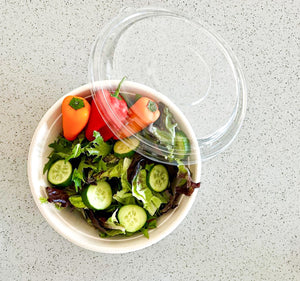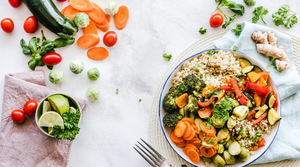23 -29 September 2019 was recycle week.
Does recycling help the environment or are we just going around in circles?
Coca Cola has launched a commendable campaign:

All its bottles are 100% recyclable. But by its own admission, that’s only half the battle. They need to get recycled!
One of the original goals of the recycling movement was to avert a supposed crisis as the nation’s landfills were running out of space and to reduce carbon emissions and the greenhouse gases as we reduce the need to manufacture new products, hence less mining, drilling and logging. But because more and more materials types have been added to the recyclable list, the process has become more complex and expensive than expected.
Here are some facts and figures on recycling rates in the UK:
- 7% of all UK household waste is classed as recyclable, leaving more than half still finding its way to the landfill. And the 45.7% only indicates it is recyclable, not where it ends up!
- The charity Wrap(Waste and Resource Action Programme.) found that just 74 out of 345 local authorities in England (only one in five) providing a complete recycling service and the government has now accepted it will not meet 2020 targets because of the current bewildering system.
- Recycling rates have stagnated in recent years and China’s National Sword programme that shut down imports of recycled materials from 13 December 2017 and our own funding cuts have seen more waste being burnt in incinerators.
- The UK exports around twice as much plastic packaging for recycling as it processes domestically and mostly to Asia. Greenpeace Unearthed Investigation has discovered waste material exported as recycling in dump sites in Malaysia!
All of the stakeholders - consumers, industry and government want to see this improve. So why is change proving so hard to achieve?
Recycling is harassed with many problems:
- Less than 10% of recyclables plastic containers get to the recycling facility as this is dependent on customers’ behaviour patterns. They need to end in the right bin and not the garbage bag on the way to the landfill!
- Even if they do get to the recycling facility success of recycling depends on the facilities capability. Recyclable paper food containers can pose a challenge to the facility because of their polyethylene coating.
- There have been effort at the industry and government level to promote recycling and some success has been achieved, but the volumes of collection materials required by the recycler have still not been achieved.
-
Recycle Now lists 28 different recycling labels on packaging. Quite onerous for a household to remember and be able to put their garbage into the right bags!

Are we going round in circles when it comes recycling?
The recycling operations itself are not environmentally friendly as they involve transporting, washing, sorting, chopping/shredding/re-melting etc it, involving resources recycling and its own environmental impact. Furthermore, the prices for recyclable materials have plummeted because of lower oil prices and reduced overseas demand. If recycling means high usage of energy and resources and hence a net environment cost, then it is only a partial solution. Furthermore, many of the products that we think are ‘recycled’ are actually ‘downcycled’.
There are four main categories of recyclable materials – paper, glass, aluminium and plastics. According to the Environmental Protection Agency’s estimates, more than 90 percent reduction in greenhouse gases come from just a few materials - paper, cardboard and metals like the aluminium in soda cans.
But with plastic, it is not that simple and where recycling gets most controversial. While virtually all plastics CAN BE RECYCLED, THEY ARE NOT because the process is expensive, complicated and the resulting product is of lower quality than the original product. According to a 2017 Science Advances paper entitled Production, of the 8.3bn tonnes of virgin plastic produced worldwide, only 9% has been recycled.
While recycling may be the key to removing the plastic waste piling up in our landfills and oceans, it mitigates carbon impacts only to a limited extent. For example, 80% of the environmental impact occurs during bottle manufacturing, which is still necessary with recycled plastic. After collecting, shredding, and washing the bottles, recycling only removes about 10% of the carbon impact from a bottles life. As such, prevention of plastic waste is the preferred method of waste reduction for businesses in food and beverage services.
According to the Ellen MacArthur Foundation recycling is an ‘outer circle’ of the circular economy and requires more energy input than the ‘inner cycle’ of repair, reuse and remanufacture. A circular economy means a system that eliminates waste; where products are made from material that do not land in the landfill or ocean for years and years on. But more than this, a circular economy is about better end-of-life recovery and about minimising energy use.
So how do we trash and still remain environmentally friendly?
- By using products that can be reused. For example using containers for cookies, butters, cakes etc. for other purposes, using reusable shopping bags, bottles and cups, etc.
- By making sure our garbage is eco-friendly. This can only be possible if we use biodegradable and compostable products. Examples of such products include nappies, wipes, cleaning products, washing /powders and disposable food packaging. Disposable food packaging is a common everyday product used increasingly by households. Many food packaging are made of foam or coated with plastic both of which are not only toxic and produce toxic waste when produced and remain in the environment permanently polluting the environment.
A biodegradable and compostable food packaging breaks down quickly and is becomes a by-product that is rich in minerals and ideal for gardening and farming.
Compost is a natural plant growing medium that reduces the need for chemical fertilizers. By setting up a compost area in our backyard where vegetable scraps, used paper towels, egg shells etc. can be turned into rich humus. This video on "How to Make a Compost Heap ." can help you get started.
Compostable, home compostable and biodegradable food packaging such as Element Packaging by default have zero plastic therefore lesser carbon impact.
Even if these products go into landfill, they do not have long term harming effects like plastic does.





